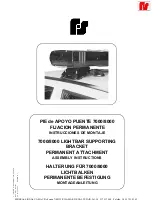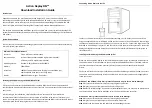
July 2021
9
Incubator Specific Operation
1.
Every minute the incubator sends an unsolicited type `D` data message. This feature is not
configurable.
2.
Additionally, packets of message type event ‘E’ (these messages provide operational Event
information) are automatically transmitted as they occur.
3.
The incubator uses a FIFO buffer for transmitting packets. No precedence will be given based on the
type of message in the packet.
4.
Flow control is not supported.
5.
Packet retransmission in the case of an error in transmission is not supported.
Receiver: Unpacking the packet
1.
Read incoming stream scanning for packet header preamble
2.
Upon recognition of the packet header preamble, read from the stream the number of bytes contained
in the packet header.
3.
Decode the packet protocol version, use the decoded version to determine validity. If the version is
invalid reset to step #1.
4.
Using the protocol version, determine where the packet length field resides in the packet header.
Decode the packet header length field, if the value is invalid, then reset to step #1
Length validity depends on the maximum length packet the recipient is expecting.
5.
Using the protocol version, determine where the recipient address resides in the packet header.
Decode the recipient address. If the recipient address is not ‘ourselves’ reset to step #1
6.
Using the protocol version, determine where the flags field resides in the packet header. Decode the
flags. If the flags are not ‘0’ (nothing special), then reset to step #1
7.
Using the protocol version, determine where the type field resides in the packet header. Decode the
type field. If the type of packet is not ‘0’ (client traffic), then reset to step #1
8.
Using the protocol version, determine where the sequence number resides in the packet header.
Decode the sequence number. If the sequence number does not decode to a value between 0-0xFF,
then reset to step #1
9.
Using the protocol version, determine where the checksum value resides in the packet header.
Decode the checksum value. Fill the checksum value field with binary zero and compute a checksum
for the whole packet.
10.
Compare the computed checksum value to the decoded checksum value. If they match then the
message is valid.
11.
Turn the message over to the process identified by the recipient ID for processing of the payload.
Incubator: Payload Unpacking
1.
Ensure the payload is from a incubator by checking the System Type field for a ‘C’
2.
Ensure the Message Category field is ‘L’ for logging.
3.
Ensure the Message Type field contains either a ‘D’ or a ‘E’
4.
If the Message Type field contains a ‘D’ follow the incubator: Data Unpacking










































